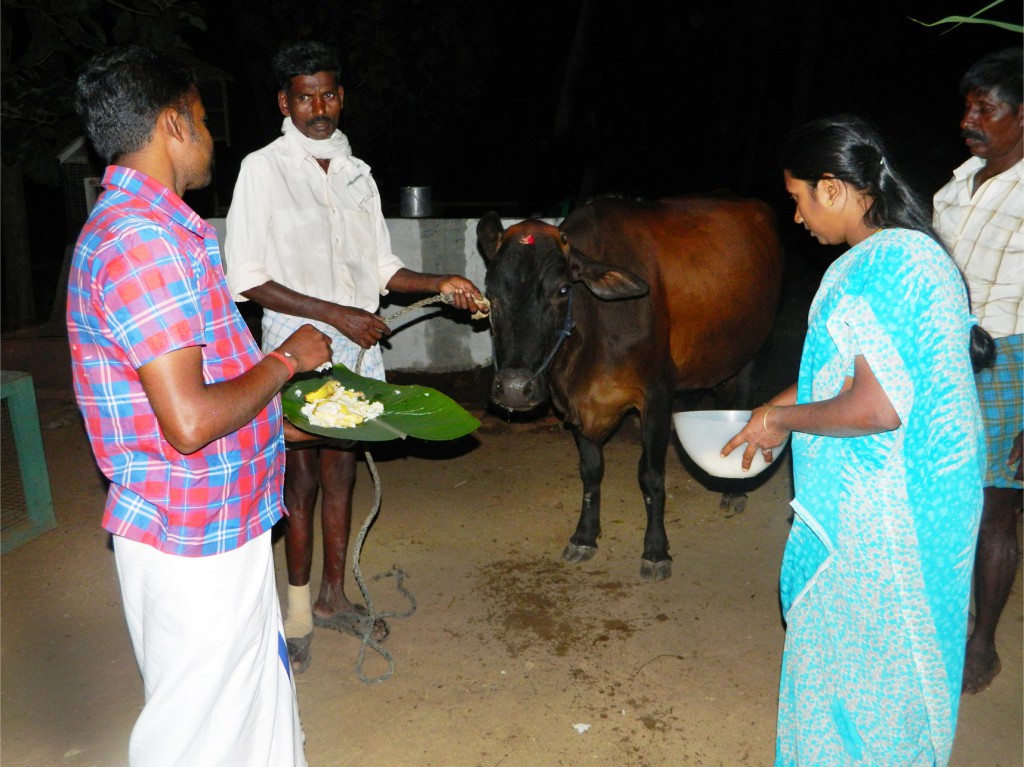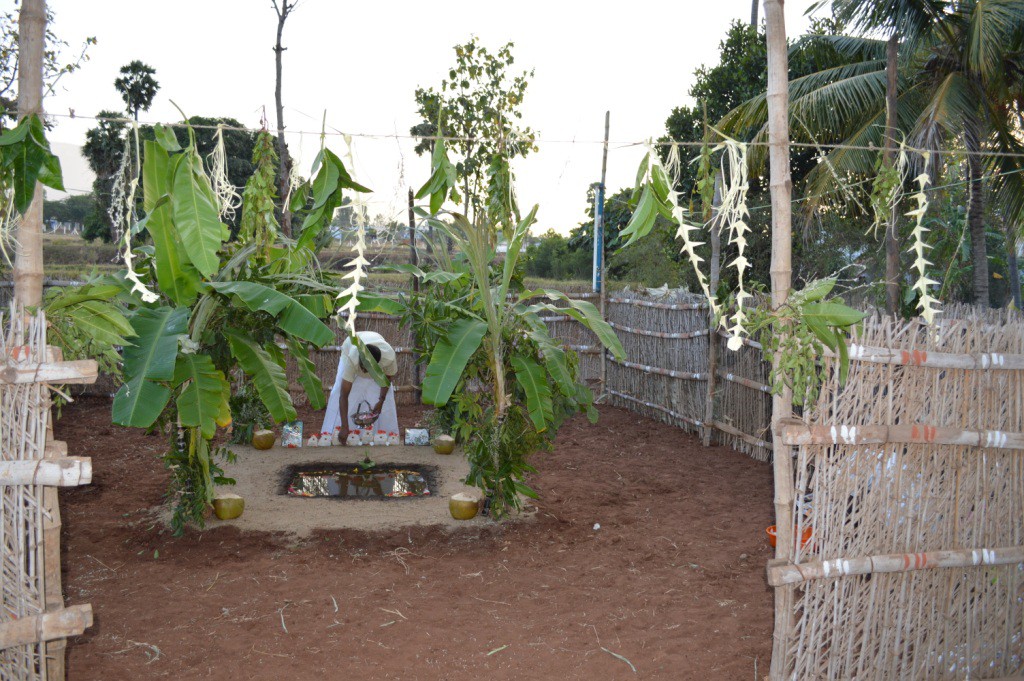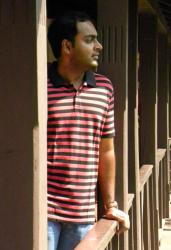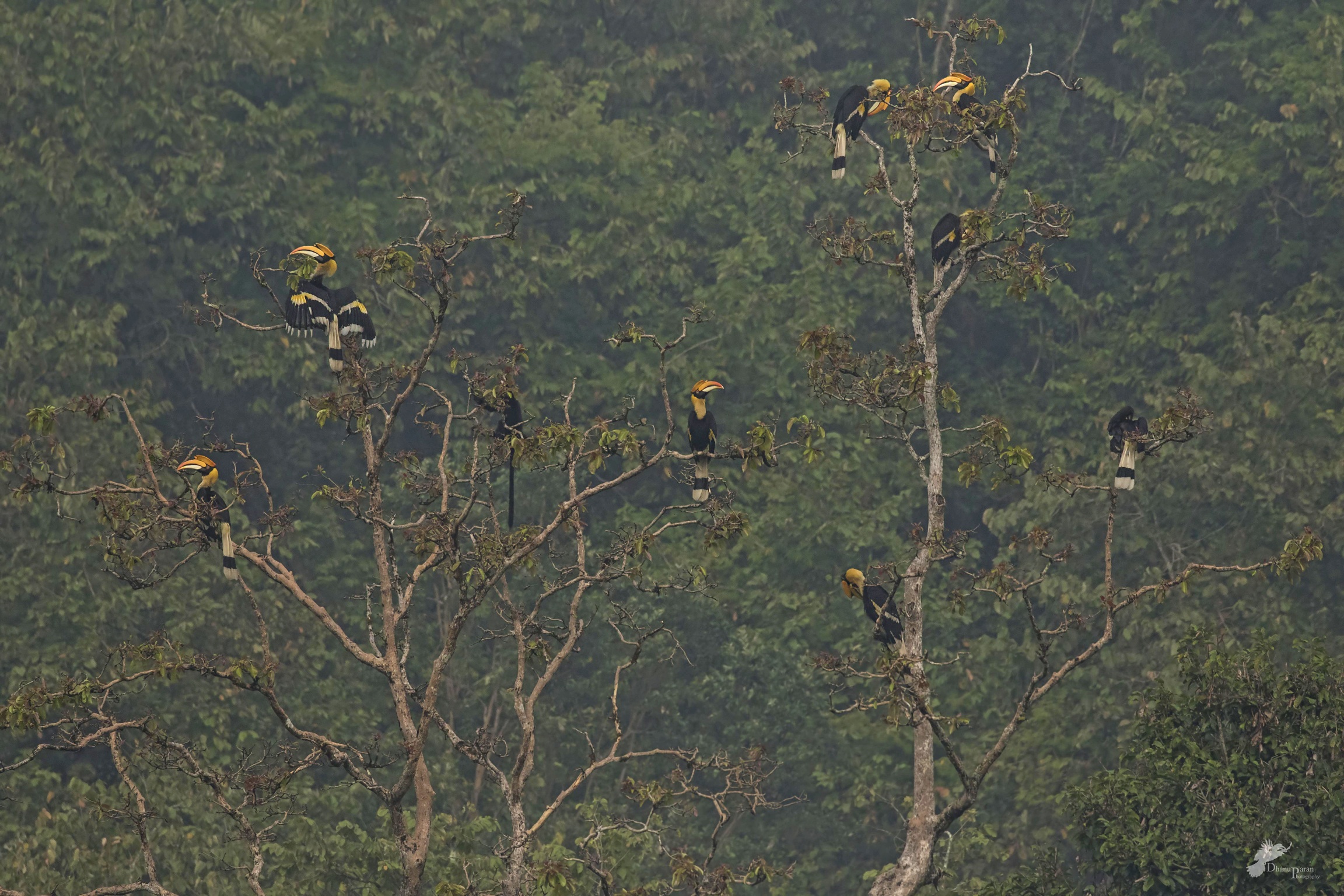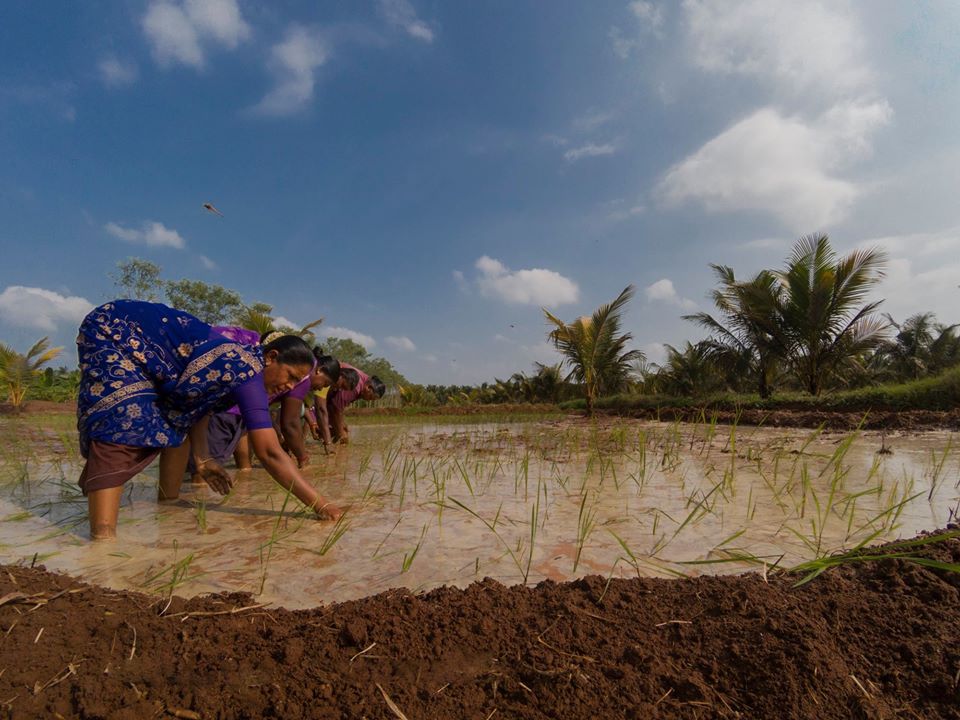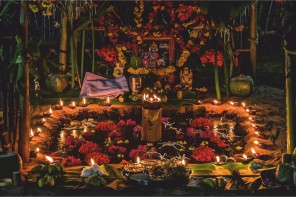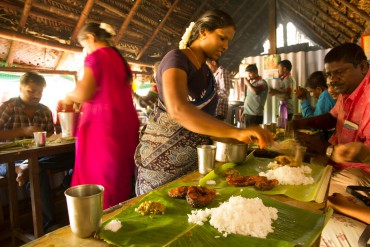Pongal, the harvest festival of Tamil Nadu, is celebrated widely by the Tamil diaspora worldwide. It marks the beginning of the Tamil month of “Thai” (around the 13th/14th of January) and the end of the month of Margazhi and winter, heralding a good harvest and better times.
Day 1- Sankaranthi:
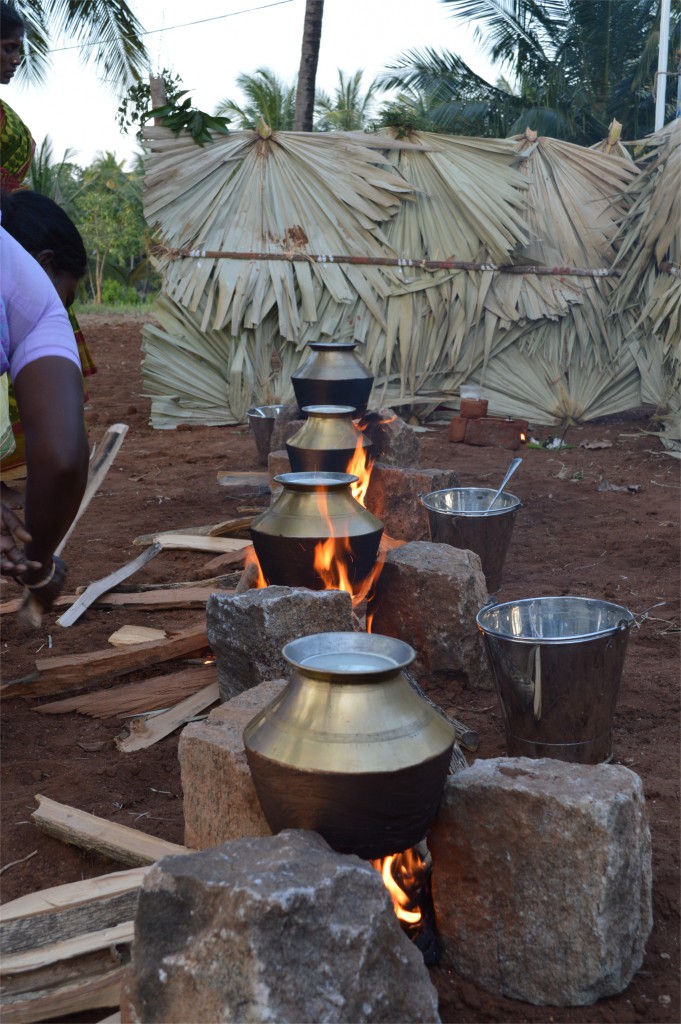
Pongal around Pollachi is a grand celebration. The preparations for it start much earlier. People do a spring cleaning, white wash their homes, decorate their floors with colourful kolams and shop for new clothes. The first day begins with Sankaranthi. Houses are festooned with bunches of neem leaves, mango leaves and AervaLanata blossoms. At dusk, the first pongal of the season, the Sankaranthi Pongal,along with the mouth watering mochai kottai kulambu is prepared at home and offered to the Gods, marking the start of the festival.
Day 2 – Veetu Pongal:
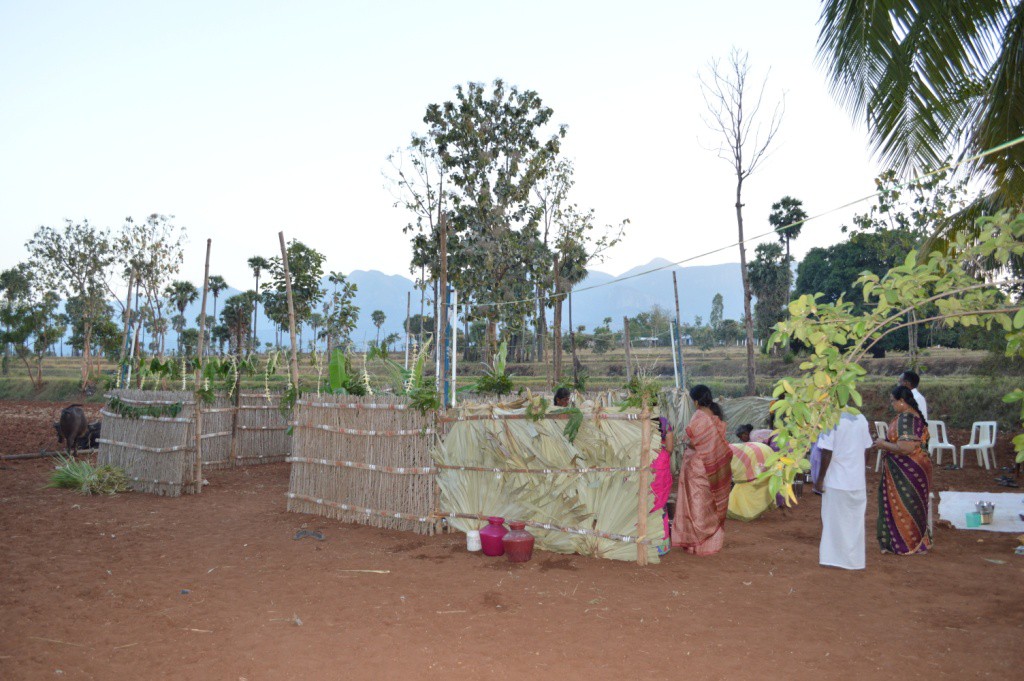
The second day is the Veetu Pongal. Pongal is once again made at home as a thanksgiving to the Gods for the comforts of home we enjoy. The Pongal is cooked in pots that are decorated with vibuthi, sandal paste and vermillion with turmeric fronds tied around them. Freshly cut sugar cane, another treat of the season is also offered up. The Sakkarai pongal is made with jaggery and rice.
Day 3 – Maatu Pongal:
The third day, MattuPongal is the grandest of all celebrations. For the agrarian community this is the time to say thank you to the Gods, Nature, the farmers and livestock who helped realise a good harvest. Preparations begin early in the morning with people decked out in their best. The cattle too are washed, their horns are covered in a fresh coat of paint, a nice dab of sandal and vermillion is applied on their foreheads and as a finishing touch new ropes and bells are wound around their necks. Till a few decades ago, it was a matter of pride to parade bullock carts laden with the utensils and ingredients necessary for the Pongal celebrations to be held at the farm. These mini processions are led by dancing farm hands, sometimes in costumes and accompanied by music from local instruments such as the thaarai thapattai. Women work on the food from morning to feed a horde of guests. There is an array of food prepared with freshly husked rice, pumpkins and mochai and a host of other vegetables. This is one day when lines in society are blurred and everyone is welcomed with open arms.
Pits known as theppa kolams (representative of the holy temple tanks) square in shape were built, layered and readied to hold water. This was done in the pattis (corales). In olden days these pattis accommodated a few dozen heads of cattle if not more. Today, symbolic pattis are still being used. They are decorated too with mango leaves, kulams and flowers.The theppai kulam is decorated on the four corners with banana stems, mango, neem ,thazham poo, sugarcane ,turmeric, Avaram Poo, and Poolai poo. The pond is filled with water and coins are dropped into it. A four sided lamp is placed atop a miniature cart float made of corn stems. Seven white stones representing the Kannimaar, the seven goddesses of the Hindu pantheon, are positioned on one side. A white Sari with a rettai maigothi is placed in obeisance to Muthaayi and Pavalaayi the wives of Ponnar and Shankar, the Gods of the KonguVellalar community.
Multiple pongals are made this day, but the most important offering is in honour of Pattiyavidaithaai, the goddess of the patti, the guardian of the livestock. It is to thank her for keeping the livestock healthy.
Other gods and goddesses who are worshipped during this time include Thadaganaachi, Karuppurayan and Maakaali. People watch how the Pongal overflows from the mud pots and predict how the harvest would be the following year.
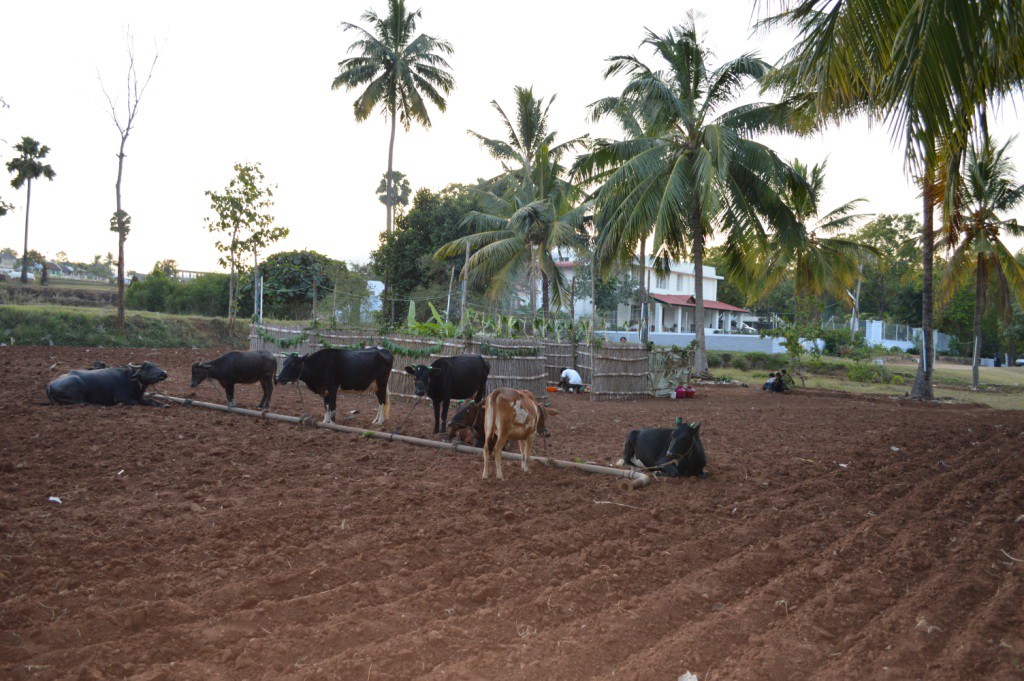
The Pongal is always first offered to the gods along with other delicacies such as the mochaikotta kolambu and arasanikka poriyal. This is done by laying four padayals around the four sides of the theppa kulams. The four denotes the directions and this was a way of thanking the forces of nature for timely rain and sun that yielded a good harvest. Three pots are carried around the patti, the first one with water meant to wash the hands of gods accompanied with cries of “KaiKaluvuPattiyaare”. The second carries food accompanied with chants of “Arasanam Pattiyare” asking them to partake of the food and the third carries water again to wash hands and cleanse the mouth after the meal, with shouts of “Vaaikaluvu Pattiyare”. This is followed by a procession of young girls carrying mavilakku, lamps made of sweetened rice and jaggery, on their heads as offerings. Once the offerings to the Gods are made, the main bull of the farm is ceremoniously brought, its mouth and hooves are washed and then the bull is fed with the main padayal and its blessings sought to the sounds of ear piercing kulavai and whistles.
The remaining padayals are eaten by the landlord who observes a day long fast for the well-being of the farm, the kaatu pannadi(caretaker) of the farm and the shepherd who tends cattle. This signifies the equal importance of the different strata of society played in a successful harvest. Once this is done, people seek blessings of the elders for more such successful harvests. In order to ward off the evil eye, people run around the cattle with clanging plates and whistles. This is called “Maadu Merattal’. For the finale, the bull is brought into the patti and made to take down all the festoons. Then milk is boiled and shared with everyone present, marking the end of the patti nombi.
Day 4 – Poo Pongal:
The fourth and final day is the “Poo nombi”, which is slightly more relaxed. Surya Pongal is made and offered to the sun god at the patti. With this the dismantling of the patti starts. This pongal is usually paired with kootansaaru. Basically it is the leftovers that are mixed and left to simmer. In the earlier days, the morning was reserved for Rekla races, the now-banned Bullock cart races. In the evenings the girls with baskets of pulaars made during margazhi go to the rivers to offer prayers. The procession starts from a corner of the village and goes from house to house, inviting girls along the way. Kummi is performed in each house.
Once upon a time, in places such as Vettaikaranpudur, elephants led processions. In addition to this there was always the new movie to catch and that wound up four days of festivities.
With changing times, festivities have also been scaled down as television draws bigger crowds. It has changed people’s attitude to what was a truly rustic and community celebration. As the pressure cooker in my Mumbai apartment whistles signalling that the Pongal is ready, I am grateful that I was part of a generation that witnessed the celebrations in their full glory
Excuse me now as I have to taste my Pongal and kolambu made with mochaikottai couriered all the way from Pollachi.



